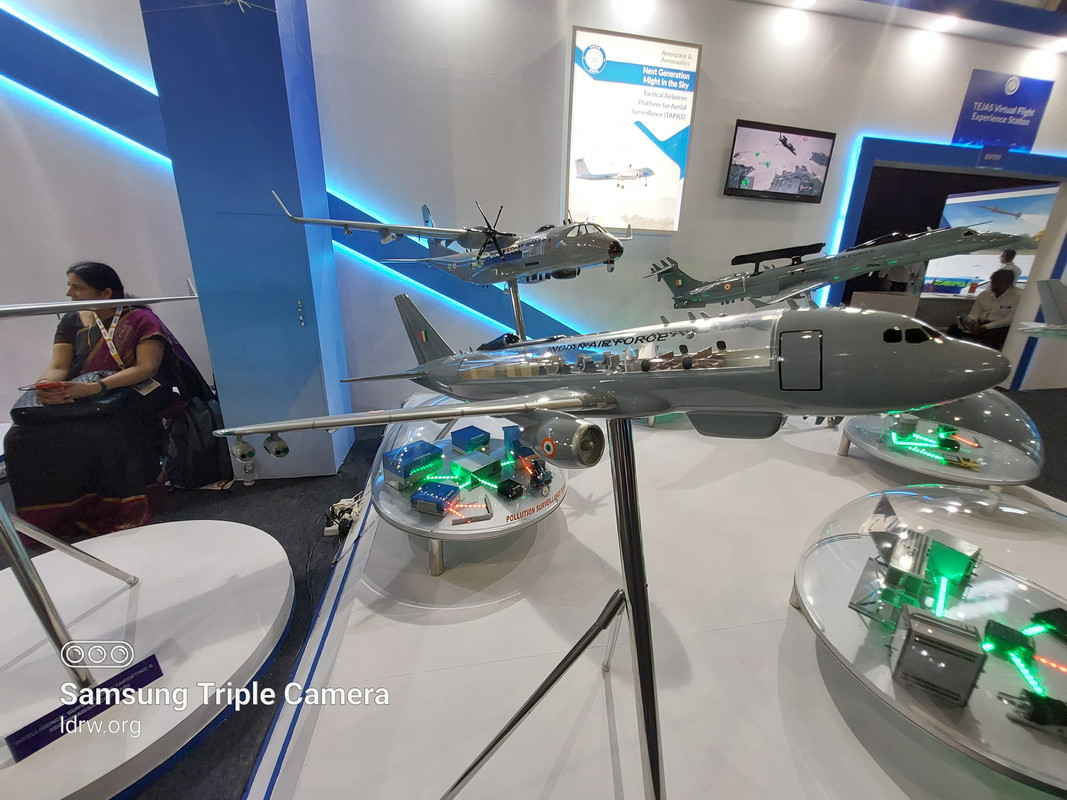SOURCE: RAUNAK KUNDE / NEWS BEAT / IDRW.ORG

As part of its strategic roadmap to bolster capabilities along its volatile borders with China and Pakistan, the Indian Air Force (IAF) has outlined its key acquisition priorities for the financial year 2025-26.
Among these is the procurement of three advanced Signal Intelligence (SIGINT) and Communication Jamming (COMJAM) aircraft, a move aimed at enhancing the IAF’s electronic warfare (EW) and intelligence-gathering prowess. Signals and Communications Aircraft (SCA), a long-endurance, multi-mission platform will be based on the pre-owned Airbus A321 airframe. This aircraft promises to deliver cutting-edge passive intelligence collection and signal jamming capabilities, reinforcing India’s aerial dominance in contested regions.
The SCA, developed by DRDO’s Centre for Airborne Systems (CABS), is designed to meet the IAF’s growing need for a dedicated platform capable of performing SIGINT (Signals Intelligence) and COMINT (Communications Intelligence) functions. Unlike traditional combat aircraft, its primary role is passive intelligence gathering—intercepting enemy radar, radio, and communication signals—coupled with active jamming to disrupt adversary operations. Built on a pre-owned Airbus A321, a twin-engine narrow-body jet, the SCA leverages a proven airframe to reduce costs while integrating state-of-the-art EW systems tailored to modern warfare demands.
With a flight altitude of 35,000 feet and an endurance of six hours, the SCA is engineered for prolonged missions along India’s northern and western frontiers. Its ability to loiter at high altitudes enhances its survivability and provides a wide operational footprint, critical for monitoring the Line of Actual Control (LAC) with China and the Line of Control (LoC) with Pakistan, where electronic emissions from military assets are a prime intelligence target.
The SCA’s standout feature is its suite of high-sensitivity COMINT and ELINT (Electronic Intelligence) sensors, designed to achieve a high probability of interception (POI). These sensors perform high-speed scans across a programmed or user-defined frequency range, detecting radiofrequency (RF) signals emitted by enemy radars, communication networks, and command-and-control systems. Leveraging artificial intelligence (AI), the aircraft rapidly analyzes the direction of arrival (DOA) and pinpoints the geo-location of the signal source with precision.
Once a target is identified, the SCA transitions into its COMJAM role, employing RF jamming to neutralize the detected signals. This capability is augmented by real-time data integration with the IAF’s Integrated Air Command and Control System (IACCS), allowing the aircraft to receive updated intelligence from ground stations or other assets. The jamming process is automated and adaptive, ensuring swift disruption of enemy communications or radar operations, a critical advantage in denying adversaries situational awareness during conflict.
To maintain connectivity with ground control, the SCA is equipped with both Line-of-Sight (LOS) and Satellite Communication (SATCOM) data links, ensuring uninterrupted mission coordination even in remote or contested areas.
Operating in hostile environments demands robust self-defence capabilities, and the SCA is well-equipped to counter threats. It features a Radar Warning Receiver (RWR) to detect incoming radar-guided missiles, Electronic Support Measures (ESM) for broader situational awareness, and a Missile Approach Warning System (MAWS) to alert the crew of missile launches. The Counter Measures Dispensing System (CMDS), which deploys chaff and flares, provides an active defence against infrared and radar-guided threats, enhancing the aircraft’s survivability during high-risk missions near enemy airspace.
Currently, the IAF relies on a limited number of platforms for SIGINT and COMJAM roles, including modified Boeing 707s and Gulfstream G100s operated by the Aviation Research Centre (ARC). However, these ageing systems lack the endurance, altitude, and advanced sensor integration of the SCA. The acquisition of three SCA aircraft will mark a leap forward, providing a dedicated, indigenous solution to bridge this capability gap.
NOTE: Article cannot be reproduced without written permission of idrw.org in any form even for YouTube Videos to avoid Copy right strikes. Websites doing illegal reproductions will get DMCA and Legal Notices.